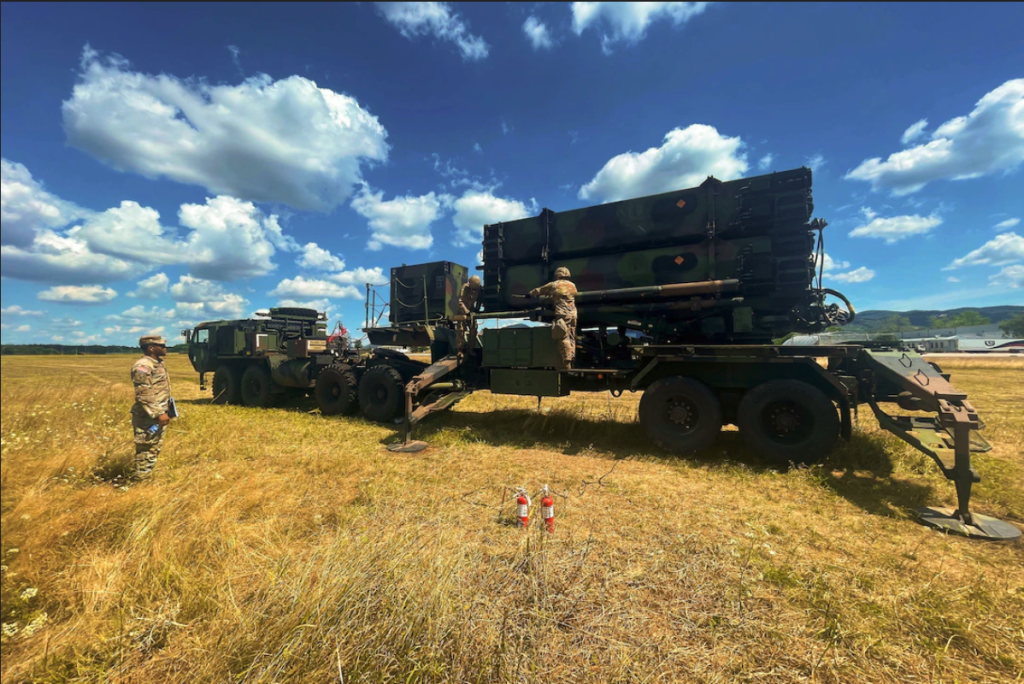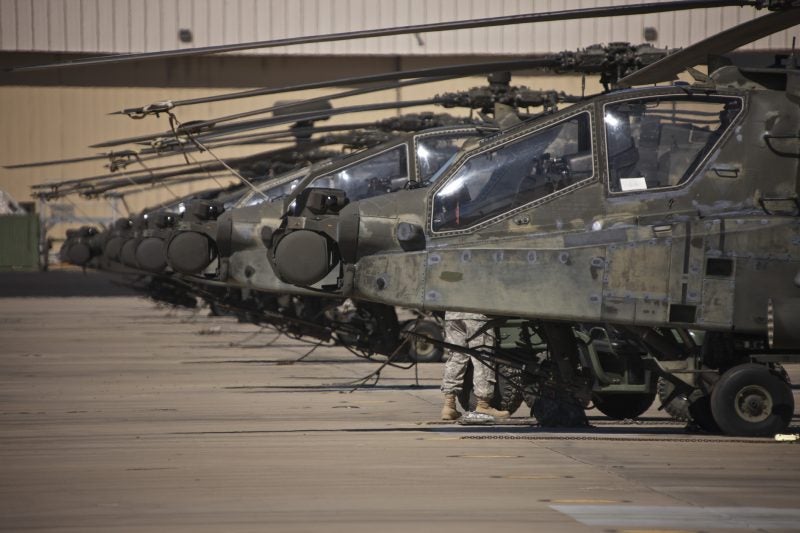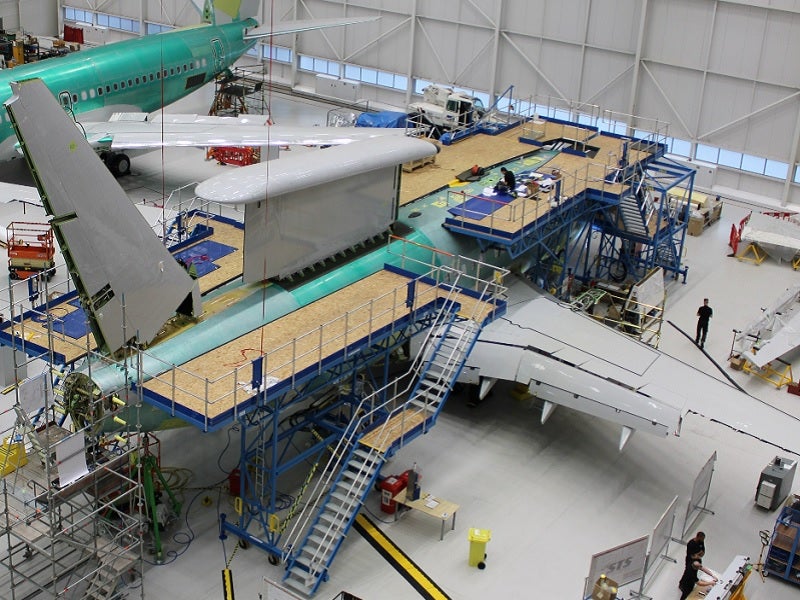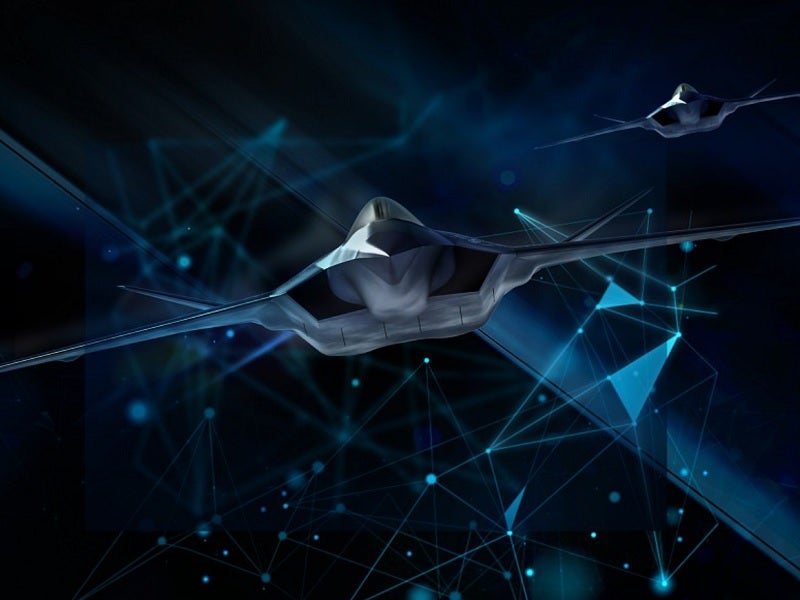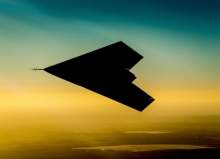
Taranis stealth aircraft ” height=”242″ src=”https://www.airforce-technology.com/wp-content/uploads/image-digitalinsightresearch/Archive/nri/airforce/Taranis.jpg” width=”430″ />
Taranis is named after a Celtic thunder god, and the £185 million demonstrator aircraft conspicuously thundered onto the scene, when it was first unveiled amid lasers and smoke, in 2010. After a series of ground tests, news of further progress went quiet until prime contractor BAE Systems confirmed in February 2014 that Taranis had successfully performed its first test flight the previous August.
Carried out under the command of BAE Systems’ test pilot Bob Fraser with piloting by Neil Dawson, both former Raf pilots who now work for BAE Systems’ Flight Test team, the demonstrator aircraft made a perfect take-off, rotation, climb-out and landing during the 15 minute flight test. This was followed by a series of further flights of up to one hour in duration at a range of altitudes and speeds.
Taranis is about the size of a BAE Systems Hawk and was designed and built by BAE Systems, Rolls-Royce, GE Aviation and QinetiQ working alongside UK MOD military staff and scientists and a number of other UK suppliers who contributed supporting technology and components. BAE Systems also led on features including the low observability, systems integration, control infrastructure and, alongside QinetiQ, full autonomy elements.
A technology demonstrator – and so much more
The Taranis programme was launched to demonstrate the potential of an unmanned, low observable combat aircraft of undertaking sustained surveillance; identifying targets, gathering vital intelligence, deterring an adversary and carrying out strikes in hostile territory.
One of its aims is to help the RAF make decisions on the future mix of manned and unmanned fast jet aircraft and how they will operate together in a safe and effective manner for the country’s defences. But Martin Rowe Willcocks, head of business development for BAE Systems’ Future Combat Air Systems business, say that it’s too early to speculate whether a direct descendent of Taranis will take to the skies.
Could a centuries-old political system and claimsa against Saab scupper Switzerland’s biggest contract?
"Taranis is a technology demonstrator, designed to provide the MOD with experimental evidence on the potential capabilities of UCAV," says Willcocks. "If we look back in history in the UK, a series of technology demonstrator programmes, including Jaguar Fly-by-wire (FBW) and the Experimental Aircraft programme (EAP), were the forerunners of today’s Typhoon programme. We see Taranis as a similar step to inform MOD planning and demonstrate UK industry’s capabilities."
While highly autonomous, Taranis is controlled by a human operator via a bespoke Ground System.
"The Taranis Ground Station performs the duplicate role of being the ground environment for controlling the aircraft and monitoring its performance during flight trials," says Rowe.
"As such it is equipped with a series of workstations for mission commander, pilot and flight test engineers. This ground station has been developed using BAE Systems’ ten years of flight trials experience for UAVs, which in turn has drawn heavily from our decades of experience in flight testing military aircraft."
While the specific timescales and objectives of the programme remain restricted, Willcocks says BAE Systems will continue to gather data and complete additional test points as per the requirements of the test programme.
"Successful completion of this programme proves the UK’s industrial capability to design and develop an unmanned, stealthy combat aircraft," he says. "This puts the UK in a strong position should we wish to enter into an international collaboration by demonstrating a genuine UCAS design, development and manufacturing capability."
But for the time being, Taranis remains a British innovation that stands to support British research and manufacturing.
"It is the first of its kind in the UK and a leading programme on the global stage," says Willcocks. "Successful completion of this programme will demonstrate to potential collaborative partners that the UK has a genuine industrial capability to design, develop and manufacture a UCAS."
nEUROn, Europe’s collaborative UCAV
If you had looked skywards over French Mediterranean on 20 March 2014, you would have seen stunning formation flying the likes of that which have never been seen previously. Dassault Aviation arranged for a nEUROn UCAV to fly alongside a Rafale fighter and a Falcon 7X business jet for several hundred kilometres; the first time a combat drone had ever flown in formation with other aircraft.
While Taranis is a mainly British production – for now at least – nEUROn is very much a pan-European collaborative effort, bringing in expertise from France, Italy, Sweden, Spain, Greece and Switzerland. As well as being the programme lead, Dassault is also contributing the general design and architecture of the system, the flight control system, the implementation of low observable devices, the final assembly, the systems integration, the ground tests and the flight tests. Other members of the industrial team are Italy’s Alenia Aermacchi – which is behind nEUROn’s unique internal weapon bay, the Smart Integrated Weapon Bay (SIWB), and other systems – along with SAAB, EADS-CASA, Helenic Aerospace Industry (HAI) and RUAG.
The reason behind this mass international collaboration extends beyond mere entente cordiale. As well as being a technology demonstrator, the programme will keep aircraft engineers from these countries from twiddling their thumbs between major fighter jet programmes – now Rafale, Eurofighter and Gripen have been delivered or are near delivery, no new European fighter programmes are slated until 2030 at the earliest.
That’s not to say the €25 million nEUROn isn’t a valid technology demonstrator in its own right, pushing the boundaries of just what is possible in the realms of unmanned combat drones. With a length and wingspan each of around 10m, the network-centric nEURon weighs around 4,500kg and will be capable of taking off with a full payload, taking it to 6,000kg. It will be able to stay airborne for several hours at a time, reaching speeds of up to 0.8 Mach.
Soldiers, sailors and airmen could soon be working together to fight huge, highly realistic battles online.
While the formation flying was a world first, the overall targets of the test flights are more prosaic. Dassault wants to evaluate the performance of an air-to-ground mission based on the detection, localisation, and reconnaissance of ground targets in autonomous modes, check how stealthy nEUROn is in terms of radar cross section and infrared signature, and test the weapon release from the SWIB, which imposes stringent timing constraints that require a fast decision loop. The command and control ground systems will also be examined, as will the back-up nodes put in place to meet safety and security regulations.
Dassault has yet to reveal what the next steps are, but the dramatic images and video of this combat-aircraft sized UCAV in flight alongside manned aircraft shows just how mature the technology is.
Joint European UCAVB effort
While Taranis and nEUROn have been flying along parallel flight paths for the past five years or so, Europe’s UCAV development effort could be taking a convergent route. In a move considered a major step forward in Franco-British military aeronautical cooperation, the French and British ministers of defence signed a letter of intent which formalises the launch of joint UCAV feasibility studies in January 2014.
British Defence Secretary Philip Hammond said at the time: "The agreements we have reached at this Summit will improve the inter-operability of our forces, enhance our joint equipment procurement and build on our capacity to support security and stability in places such as Libya, Mali and the Central African Republic."
Building on defence treaties inked in November 2010, the two-year, £120 million joint feasibility stage will be headed up by none other than Dassault Aviation and BAE Systems. As well as working on their own UCAVs, the companies have already carried out joint studies in the field as part of the Future Combat Air System Demonstration Programme Preparation Phase collaborative study. Safran, Rolls-Royce, Thales and Selex will also partner on the project, which will likely be based around nEUROn.
While the English Channel has separated the development of Taranis and nEUROn, it seems a future UCAV based on the lessons learned from the two projects could be flying under the gold stars of the European flag.


.gif)
